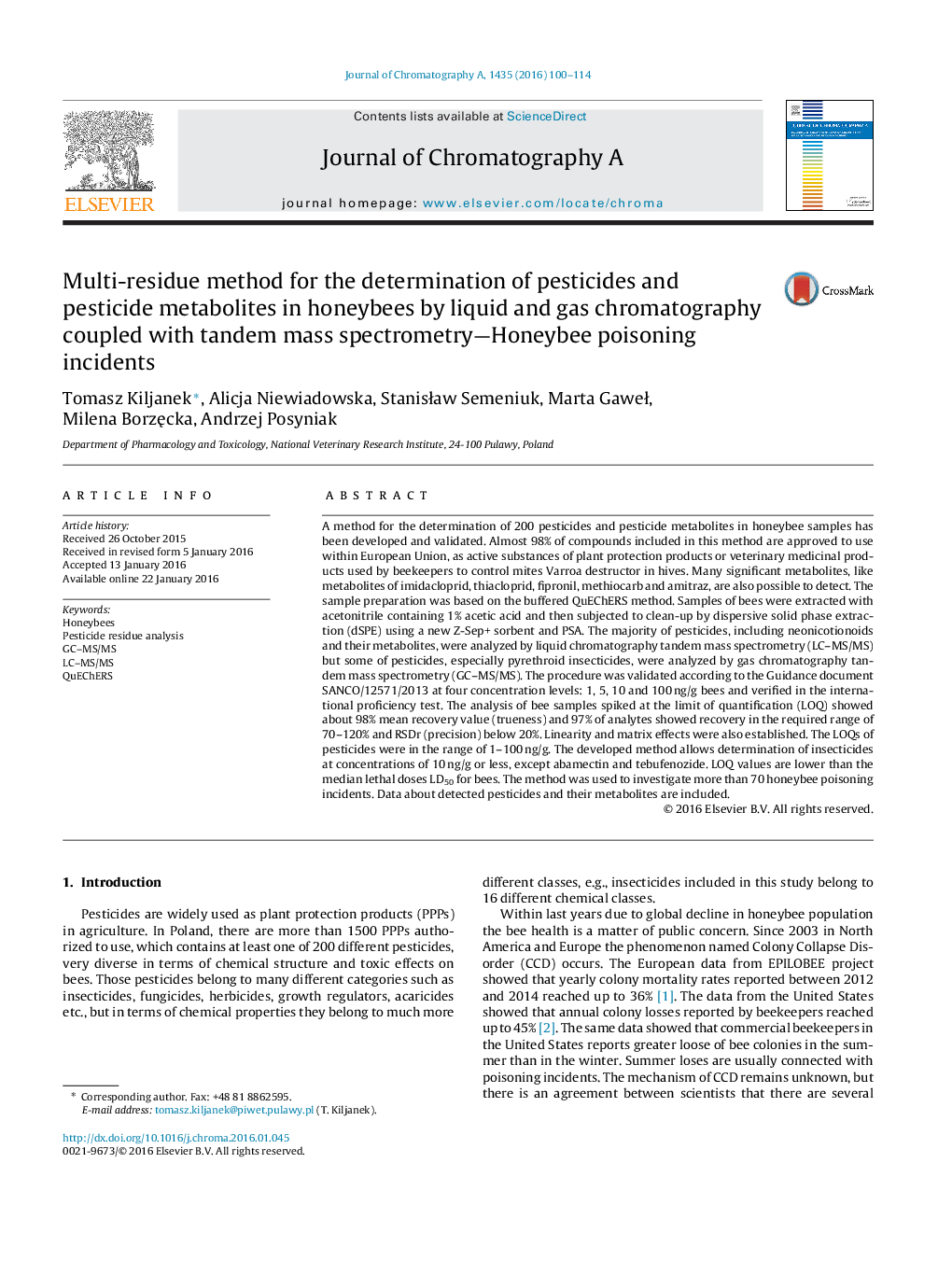| کد مقاله | کد نشریه | سال انتشار | مقاله انگلیسی | نسخه تمام متن |
|---|---|---|---|---|
| 1200550 | 1493491 | 2016 | 15 صفحه PDF | دانلود رایگان |
• About 98% of analysed pesticides are approved to use within European Union.
• Simultaneous analysis of pesticides with acid, base and neutral properties.
• Combined and applied different mechanisms of Z-Sep+ and PSA during dSPE clean-up.
• The same extraction and clean-up procedure for LC–MS/MS and GC–MS/MS.
• Fifty seven pesticides and pesticide metabolites detected in poisoned honeybees.
A method for the determination of 200 pesticides and pesticide metabolites in honeybee samples has been developed and validated. Almost 98% of compounds included in this method are approved to use within European Union, as active substances of plant protection products or veterinary medicinal products used by beekeepers to control mites Varroa destructor in hives. Many significant metabolites, like metabolites of imidacloprid, thiacloprid, fipronil, methiocarb and amitraz, are also possible to detect. The sample preparation was based on the buffered QuEChERS method. Samples of bees were extracted with acetonitrile containing 1% acetic acid and then subjected to clean-up by dispersive solid phase extraction (dSPE) using a new Z-Sep+ sorbent and PSA. The majority of pesticides, including neonicotionoids and their metabolites, were analyzed by liquid chromatography tandem mass spectrometry (LC–MS/MS) but some of pesticides, especially pyrethroid insecticides, were analyzed by gas chromatography tandem mass spectrometry (GC–MS/MS). The procedure was validated according to the Guidance document SANCO/12571/2013 at four concentration levels: 1, 5, 10 and 100 ng/g bees and verified in the international proficiency test. The analysis of bee samples spiked at the limit of quantification (LOQ) showed about 98% mean recovery value (trueness) and 97% of analytes showed recovery in the required range of 70–120% and RSDr (precision) below 20%. Linearity and matrix effects were also established. The LOQs of pesticides were in the range of 1–100 ng/g. The developed method allows determination of insecticides at concentrations of 10 ng/g or less, except abamectin and tebufenozide. LOQ values are lower than the median lethal doses LD50 for bees. The method was used to investigate more than 70 honeybee poisoning incidents. Data about detected pesticides and their metabolites are included.
Journal: Journal of Chromatography A - Volume 1435, 26 February 2016, Pages 100–114
